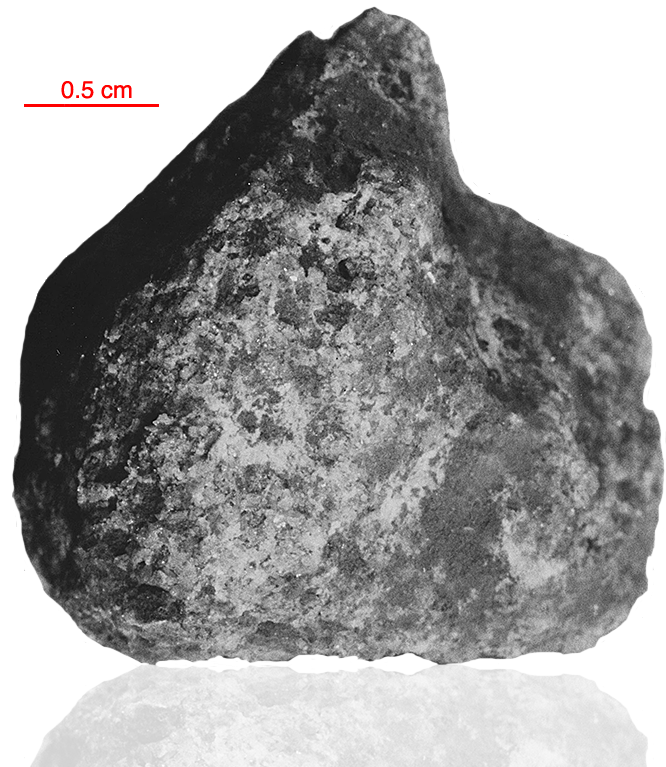
Fact sheet
65795 is an aluminous igneous rock with a basaltic texture. Plagioclase (An98) laths are up to 1.5 mm long and some are ophitically enclosed with pyroxene (rotation 1). Mafic species include olivine, orthopyroxene and clinopyroxene. Some plagioclase crystals are blocky and may be relict xenocrysts. Accessory minerals are ilmenite, metallic iron, troilite and a silica phase (see small triangular inclusion-laden patch in rotation 2).
The sample weighed 6.84 grams before analysis and has been dated at 3.81±0.04 billion years (Rb/Sr).
Further details of this and other Apollo samples are here: http://curator.jsc.nasa.gov/lunar/
Our thin section is slightly thick, so between crossed polars some plagioclase crystals are yellow instead of shades of grey.
The Apollo 16 landing site was in the hilly region around Descartes crater in the lunar highlands. The landing spot was chosen to allow the astronauts to gather geologically older lunar material (Descartes Formation and the Cayley Formation) than the samples obtained in the first four landings, which were in or near lunar maria.
The mission lasted 11.1 days, with a stay on the lunar surface of 71 hours. The crew were on the lunar surface for 20.2 hours during which they traversed approximately 27 kilometers and collected approximately 96 kilograms of samples.
Apollo 16 was launched on 16 April 1972.






